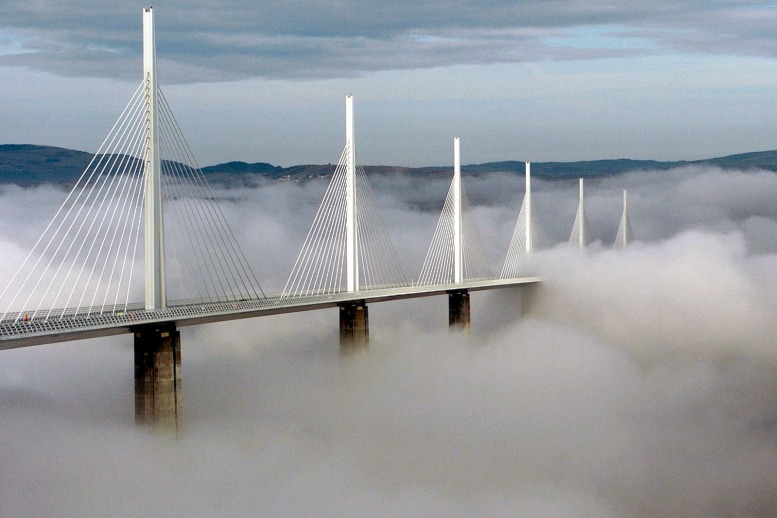
Sponsored Links
From bridges to homes and highways, there are incredible examples of architecture throughout the world. We've gathered some of the most mindboggling to share; get ready to add some new places to the travel bucket list!
Cykelslangen
First on our list is an incredible bicycle bridge, Cykelslangen, located in Copenhagen, Denmark. The pathway connects several districts and helps to transport cyclists over the harbor in a delightful way.
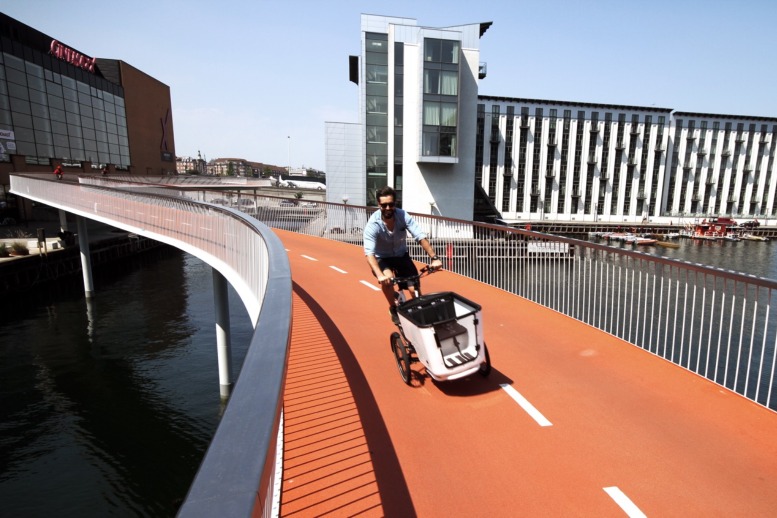 Wikimedia Commons via Jakob Munk
Wikimedia Commons via Jakob MunkThe bridge, known to tourists as The Bicycle Snake, is just over 720 feet long and spans the city from East to West. Designed by Dissing+Weitling, Cykelslangen opened in late June of 2014. And, it has since been filled with cyclists from all over the world.
Longkamp Highway Ecoduct
Located in Longkamp, Germany, is a highway with the construction of a unique ecoduct. These bridges are created to allow animals to cross human-made roadways safely. Ecoducts not only decrease the chance for vehicle and animal collision but many believe they add beauty to large areas of the road as well.
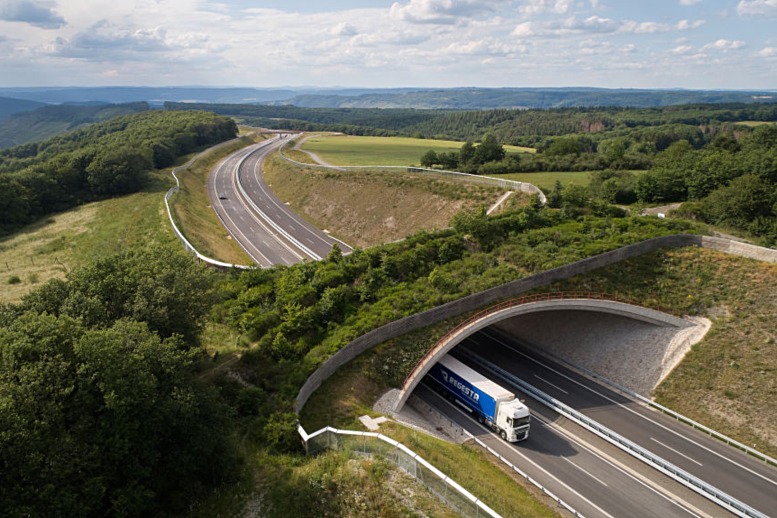 picture alliance / Contributor via Getty Images
picture alliance / Contributor via Getty ImagesIn an effort to preserve the lives of animals, this eco-bridge is just one of 15 in this general area of Germany. Along the way, drivers may notice two landscape tunnels and 9 underpasses for wildlife. As far as the eye can see here, an abundance of nature lays on each side and atop the road as well.
Tokyo Highway Interchange
The following example of exceptional infrastructure is this large Y-shaped highway interchange near Tokyo. With a couple of large turns and merging lanes, the road was built with the idea of rerouting drivers in the same direction. Despite the confusing looking bird's eye view, this architecture was constructed to help!
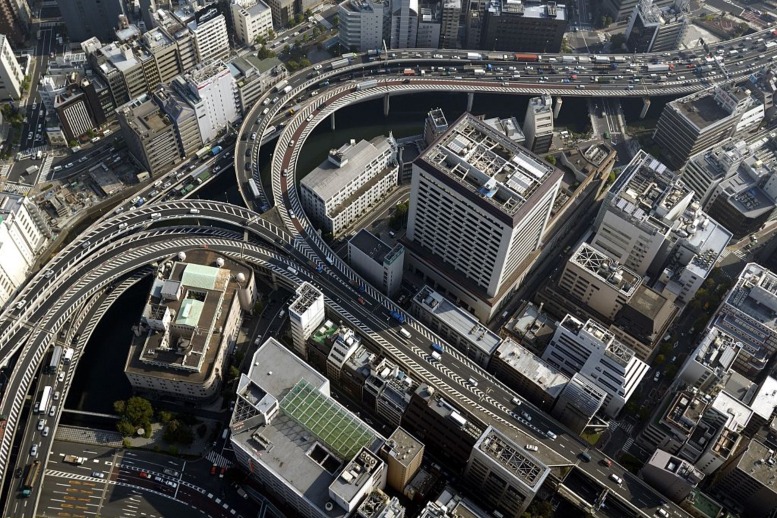 ullstein bild / Contributor via Getty Images
ullstein bild / Contributor via Getty ImagesWhile we can see several overlapping ramps all leading to the same place from both sides, we're sure many locals can handle these merges without issue. Some parts of the interchange were made one lane, and others two lanes. We just hope there's the use of blinkers on this winding strip!
Veluwemeer Aqueduct
The Veluwemeer Aqueduct, also referred to as the water bridge, was built over Veluwemeer Lake in Harderwijk, Netherlands. It's an 82-foot long structure that allows the travel of water vehicles over roads, railways, rivers, or valleys. How about that for an incredible invention?
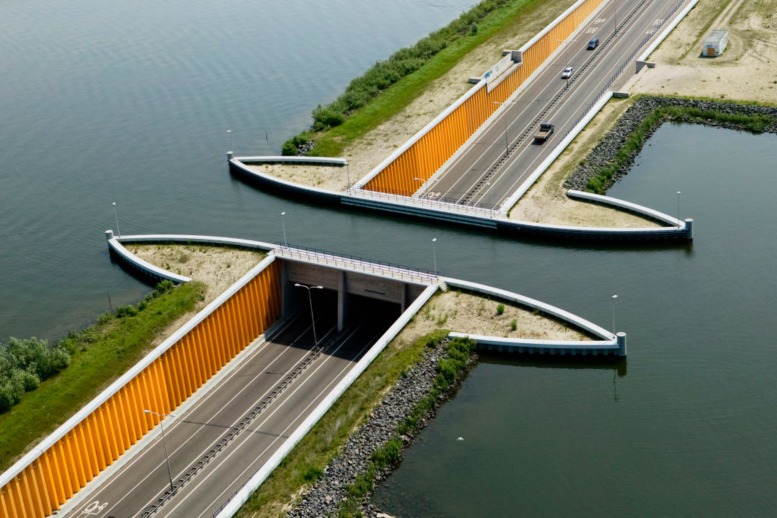 Construction Photography/Avalon / Contributor via Getty Images
Construction Photography/Avalon / Contributor via Getty ImagesThis aqueduct, in particular, crosses over the N302 freeway in Harderwijk, Netherlands. It opened for travel beginning in 2002 and has since seen its fair share of travel via road and water. We can't help but wonder how long vehicles with wheels spend waiting to cross the way when a boat is near.
Nature-Filled Skytrain
The Jewel Changi Airport not only holds the record for the world's tallest indoor waterfall, known as the Rain Vortex, but it also has an indoor forest! That's right; The airport includes a nature-themed Skytrain from one terminal to the next.
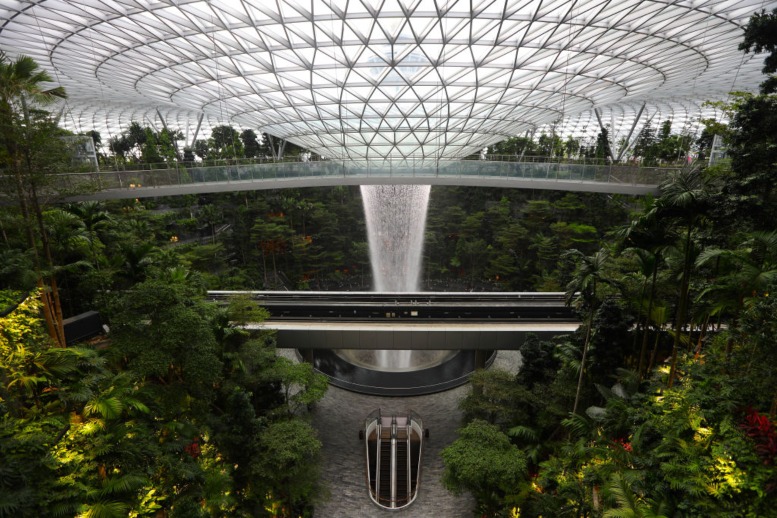 Suhaimi Abdullah / Contributor via Getty Images
Suhaimi Abdullah / Contributor via Getty ImagesExotic trees, plants, and more grow around the Rain Vortex. All are visible via the train that seems to fly through paradise between the 3 passenger terminals, airport hotel, gardens, and retail complex. Standing tall above the ground, the view must be outstanding!
Brutalist Flats
Brutalist architecture, such as the Camden, London units seen in the photo below, began in the 1950s, post-war in the United Kingdom. Typically, this style is constructed with minimalism in mind, sticking mainly to brick and or concrete and exposed materials such as steel, glass, or wood for design.
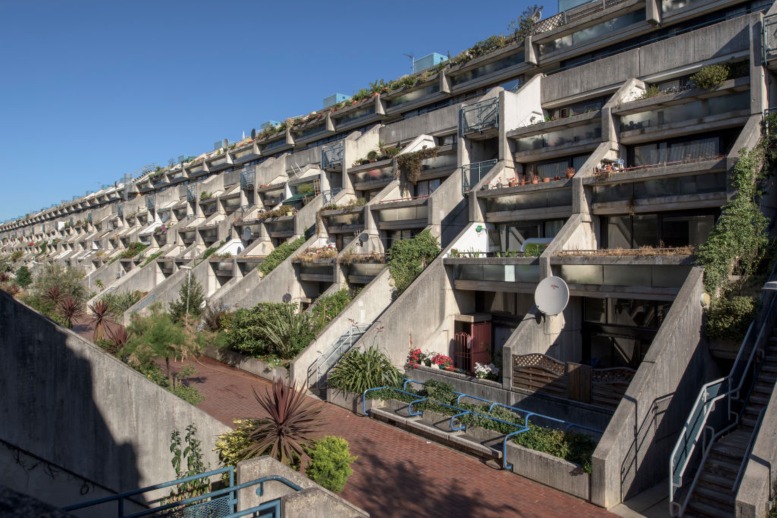 View Pictures / Contributor via Getty Images
View Pictures / Contributor via Getty ImagesWhile some have picked up the opinion that this style is "cold," others, such as architectural critic Reyner Banham leaned into the infrastructure's history. Whether or not it remains popular today, there's no denying that these homes stand out from the rest in Camden!
Storseisundet Bridge
As one of 8 bridges that make up Norway's "Atlantic Road," Storseisundet Bridge acts as the connection point between the island of Averoya to Romsdal peninsula. It took 6 years to build, and per construction records, withstood a handful of water-related troubles in the process!
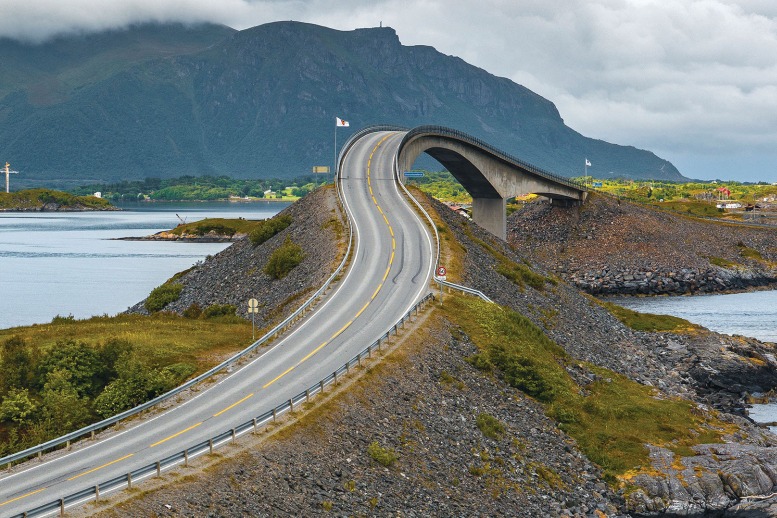 Rich Pearce/Future/Shutterstock via Shutterstock
Rich Pearce/Future/Shutterstock via ShutterstockAt 850-feet long, the Storseisundet Bridge has many twists and turns. But, one, in particular, creates an optical illusion that would make anyone come to a complete stop. From the angle of the road at the bottom of this hill, it seems that drivers will ride off the path and into the sky.
Wuppertal Suspension Railway
Originally called the Eugen Langen Monorail Overhead Conveyor System, the Wuppertal Suspension Railway is the oldest elevated electric railway equipped with floating cars in the world. It's unique to Germany and was actually turned down as a construction plan 3 times before approval of the build.
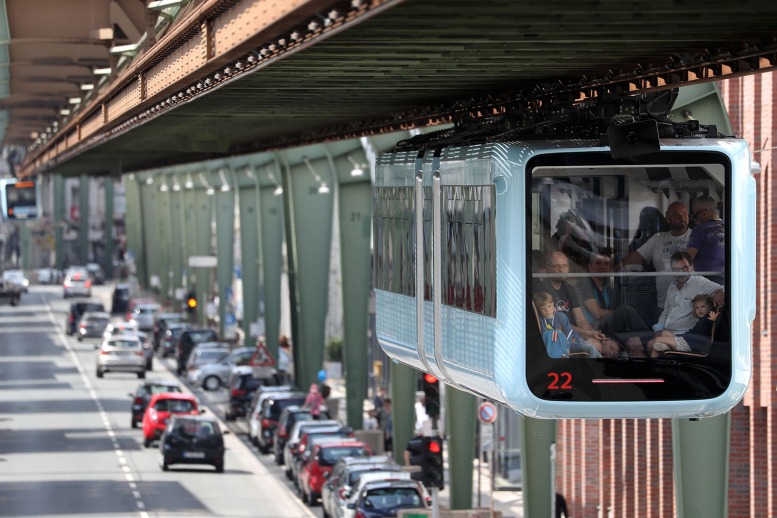 FRIEDEMANN VOGEL/EPA-EFE/Shutterstock via Shutterstock
FRIEDEMANN VOGEL/EPA-EFE/Shutterstock via ShutterstockAccording to an annual report submitted in 2008, the Wuppertal Suspension Railway transports about 25M passengers per year, approximately 80,000 travelers per weekday. At nearly 40-feet above the ground, riders of the railway enjoy a bird's eye view of the cities passing by.
Fishway Streams
Known as a fish ladder, fishway, or fish steps, this structure is often found on or around barriers in natural agriculture such as streams, dams, and waterfalls. The infrastructure was created with fish in mind, specifically salmon. But, how does it work?
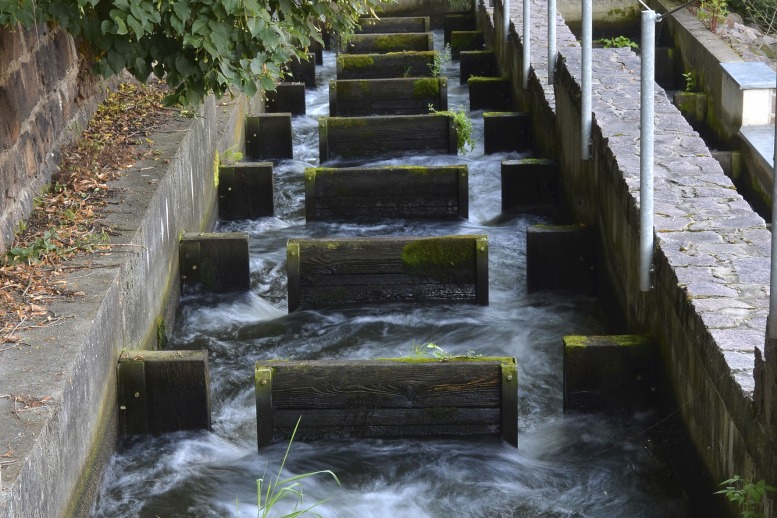 imageBROKER/Shutterstock via Shutterstock
imageBROKER/Shutterstock via ShutterstockWell, with the ladder-like shape, fishways allow swimmers such as salmon to jump from one step to the next to travel between waterways. Initially, the design was brought to life in the East coast state of Rhode Island, on the Pawtuxet Falls Dam. Since then, the invention has been altered to fit a variety of flowing waters.
Saint Petersburg Metro
The Saint Petersburgh Metro Station in Russia is full of gorgeous gold and embossed pillars, chandeliers, and stunning tile. After initially being constructed to act as a shelter during WWII, its history was soon rewritten as one of the most elegant stations in the world.
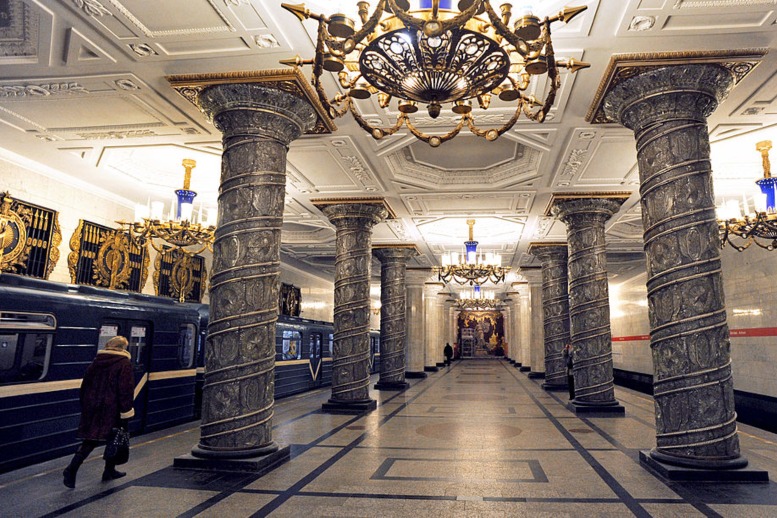 AFP / Stringer via Getty Images
AFP / Stringer via Getty ImagesIt also happens to be one of the world's deepest metros as well! Equipped with 5 separate lines spanning a total of 77 miles, the Saint Petersburg Metro has been reported to service 72 stations, 7 transfer locations, and about 2M passengers each day.
Bhumibol Bridge
Known as either the Industrial Ring Road Bridge or the Bhumibol Bridge, the incredible structure you see here is located in Bangkok, Thailand. Equipped with massive cable stays, the bridge's highest point stands 164-feet above the ground. History has proven that the bridge was named after Royalty.
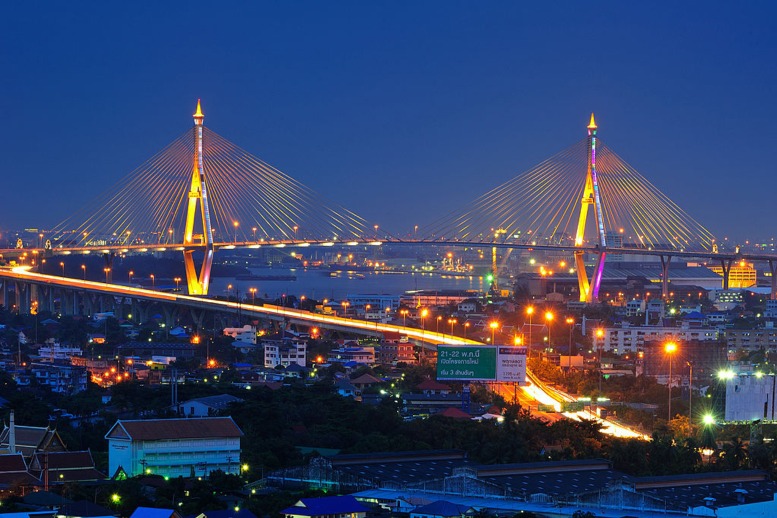 AFP / Stringer via Getty Images
AFP / Stringer via Getty ImagesIn fact, in 2009, it was announced that the bridge was named after King Bhumibol Adulyadej. As amazing as we can imagine this bridge is to drive across, if you ride a motorcycle, you'll have to ditch it for a car because vehicles with 4 wheels are the only ones allowed, for safety precautions, of course.
Atocha Train Station Botanical Garden
Located within the Atocha Train Station in Spain is another nature-filled wow factor: A botanical garden! Not only is this railway station the largest in Madrid, but it was also the first, coming to fruition in 1851. It went on to receive several reconstructions throughout the years, especially in 2004.
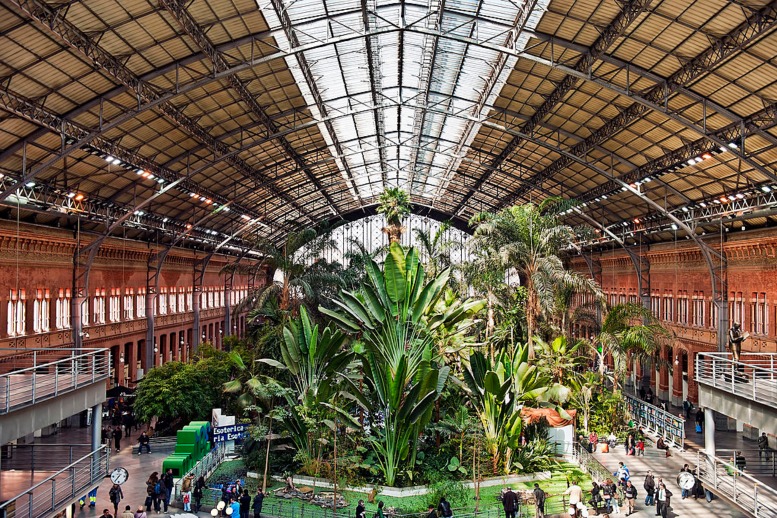 John Greim / Contributor via Getty Images
John Greim / Contributor via Getty ImagesUnfortunately, a 2004 train explosion caused the loss of 191 lives and called for even more renovations. Since then, the Atocha Train Station has gained a gorgeous garden in its plaza and adopted a stream outside the building. The idea behind it was to signify water as a symbol of life due to those lost there.
Tasmania's Gordon Dam
The next item on our list takes us outside - to the Gordon Dam in Tasmania, Australia. This massive concrete curve acts as a barrier within the Gordon River. Constructed in 1974, the dam soon grew to be 650-feet long and 460-feet tall, making it the fifth-tallest on the continent.
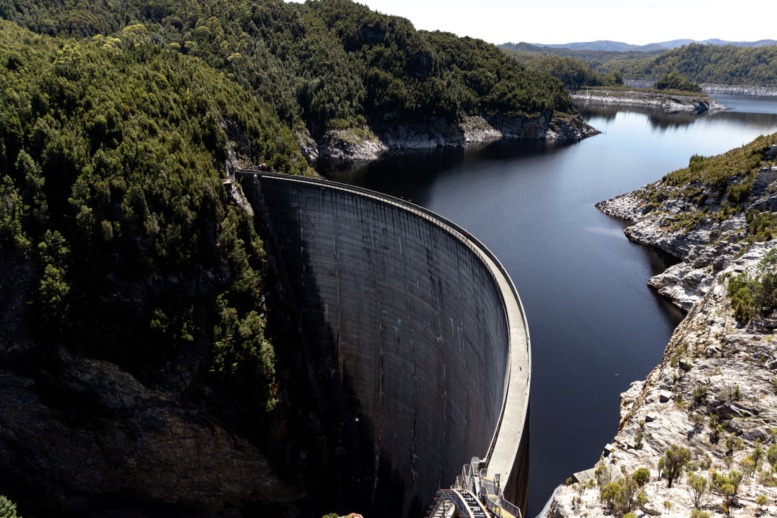 Mackenzie Sweetnam / Contributor via Getty Images
Mackenzie Sweetnam / Contributor via Getty ImagesAs of 2020, the dam has received much recognition, including a title from the Engineering Heritage Recognition Program. Engineers Australia, a non-profit organization, listed Gordan Dam as a National Engineering Landmark due to its immense capabilities.
Beipanjiang Bridge
Located between the provinces of Yunnan and Guizhou in China, the Beipanjiang Bridge has also become known as the Duge Bridge. In 2016, the structure became known as the highest bridge in the World, standing 1,850-feet above the Beipan River, only to get beat out by another item on our list, but we'll get to that later.
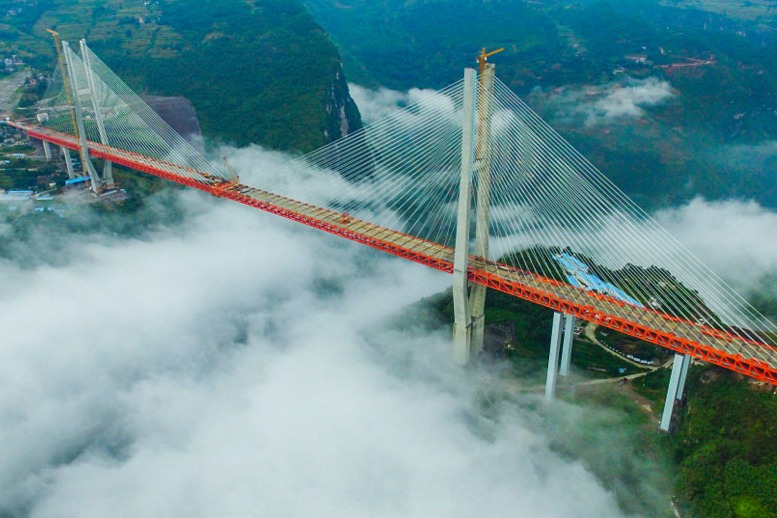 Barcroft Media / Contributor via Getty Images
Barcroft Media / Contributor via Getty ImagesIn 2018, the bridge gained a Guinness World Record title but, again, was beat out in later years. Aside from being massively tall, its length is equally as shocking. The construction of this overpass shortened the commute between the provinces from about 5 hours to one. This was all thanks to its 4,400-foot straightaway path.
Crescent Dunes Solar Energy Project
This incredible formation is comprised of 10,000 mirrors, organized into a spiral to span about 2 miles wide. What is it? The Crescent Dunes Solar Energy Project. This landed-UFO-looking collection of reflectors was the first solar power plant equipped with a central receiver tower and energy storage technology.
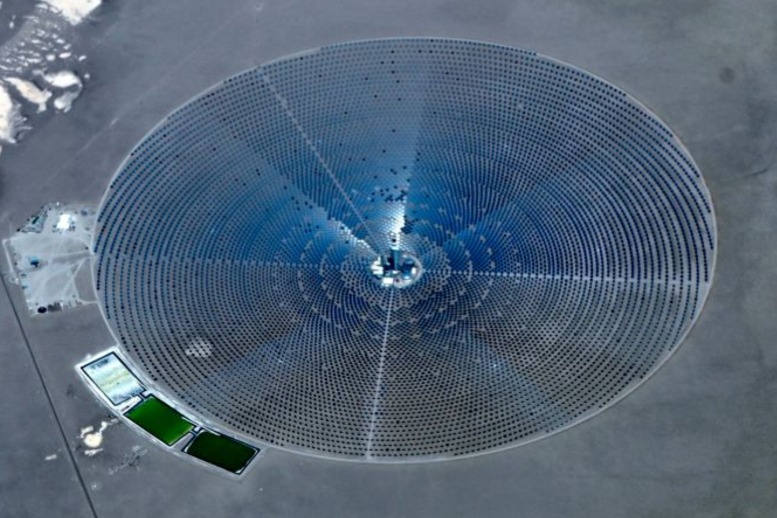 DANIEL SLIM / Contributor via Getty Images
DANIEL SLIM / Contributor via Getty ImagesLocated close to Tonopah, Nevada, the project has a 110-megawatt capability and 1.1 gigawatt-hours of power storage. But, while this infrastructure may look massively impressive, it hasn't produced solar power in several years. And, unfortunately, it isn't expected to in the future.
Clifton Suspension Bridge
Located in Bristol, England, is a centuries-old toll overpass called the Clifton Suspension Bridge. Standing at 331-feet above high tide and spanning 1,352-feet in length, the structure crosses over the River Avon. Aside from its beautiful brick arch details, the bridge supplies people with a gorgeous view down the river.
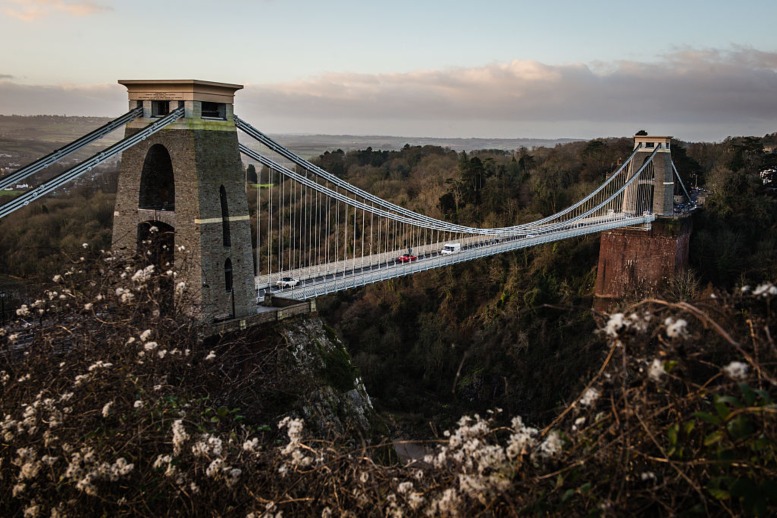 Ben Birchall - PA Images / Contributor via Getty Images
Ben Birchall - PA Images / Contributor via Getty ImagesSince it was built, the bridge has become a distinctive landmark of the country, used on stamps, postcards, and more. A little known fact to those of us who don't reside in England is that although the two towers look identical, they differ in construction!
Circular Village Settlements
Talk about living in a cul-de-sac! The residents of these circular village settlements in Denmark each have pizza-slice-shaped yards and homes all pretty equal in size. We can only imagine how dizzying it would be to get lost in one of these establishments.
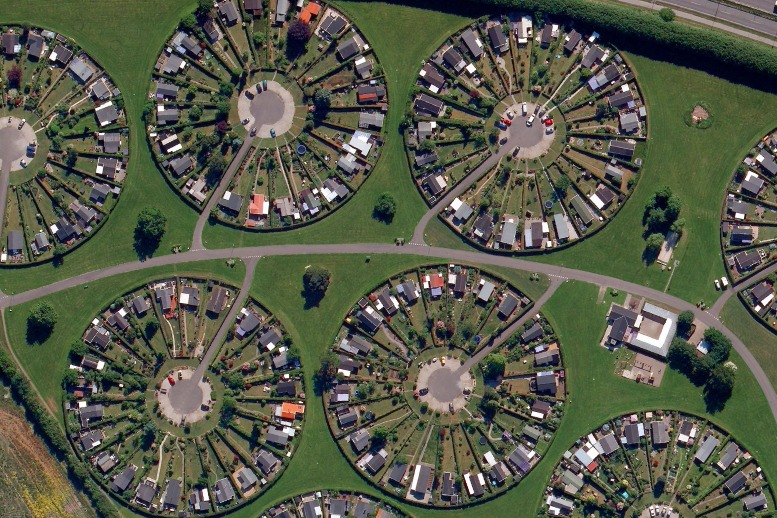 DigitalGlobe/ScapeWare3d / Contributor via Getty Images
DigitalGlobe/ScapeWare3d / Contributor via Getty ImagesLooking at the layout of the neighborhood, we're left wondering if this unique construction allows for block parties and if school busses stop into each circle or just the first in line. Despite the answers, we can imagine that the people living in this proximity must be a tightly-knit community.
The Houtribdijk Dam
According to construction records, this infrastructural miracle was built between 1963 and 1975. The barrier has become widely recognized as The Houtribdijk Dam. The road itself is N302 and spans a massive 18.6 miles in length, connecting the cities of Enkhuizen and Lelystad in The Netherlands.
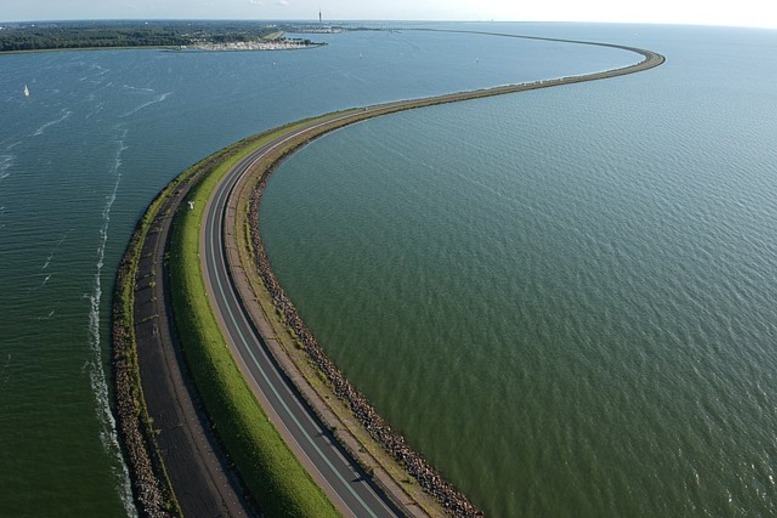 Wikimedia Commons via Snempaa
Wikimedia Commons via SnempaaAround the middle of the journey, those needing a pit-stop can pause at Trintelhaven, an emergency harbor with a restaurant and radio station. Houtribdijk is rumored to be traveled on by an average of 8,500 modes of transportation each day. And, with as gorgeous of a view on either side of the dam, we can surely understand why!
Shalu Leisure Landscape Trail
This staircase seems like a typical walkway until one realizes that it resides in the underpass of a large roadway. Not only that, but it is full of greenery and lush plants. This may seem strange for space that seems less-traveled than most, but in Taichung, Taiwan, this is a popular location for sightseeing.
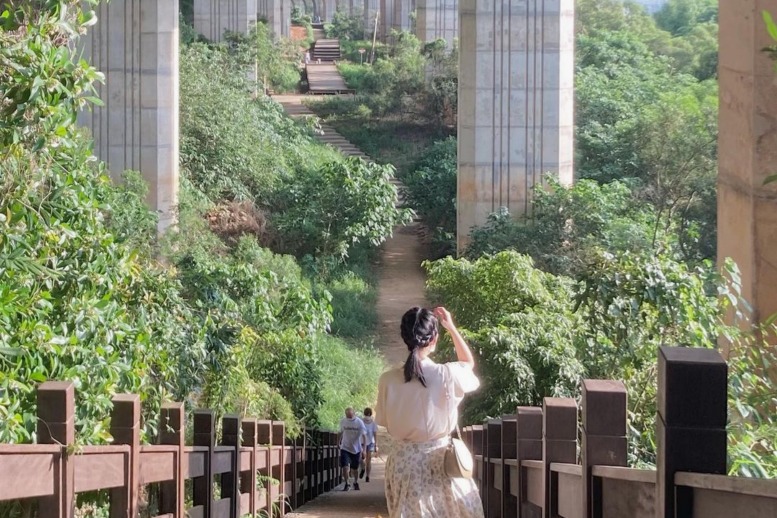 Instagram via @___yuchieh
Instagram via @___yuchiehThis creative landscape trail is known as Shalu Leisure, where, based on the number of stairs we can see in this image, it looks less leisure-filled and more like a day's workout! Nevertheless, this plant-filled path is one we're adding to our bucket list.
Dudhsagar Falls
Someone might need to pinch us because when we saw this for the first time, it was hard to believe this stunning view exists in real life. However, located in Goa, India, is the 4-tiered waterfall and bridge crossing known as Dudhsagar Falls. Also referred to as the "Sea of Milk," the falls are captivating.
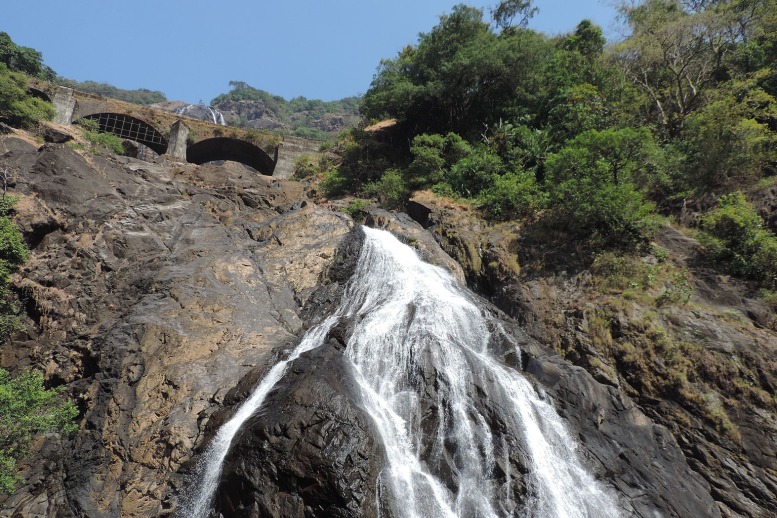 Wikimedia Commons via Guptabhel
Wikimedia Commons via GuptabhelTo access this fantastic example of one of Earth's natural creations, tourists and locals can call upon the Bhagwan Mahavir Wildlife sanctuary taxi. As of this writing, that is currently the only way to catch a glimpse of the captivating Sea of Milk.
The Delta Works
Widely known as one of the Seven Wonders of the Modern World by the American Society of Civil Engineers, the Delta Works is located in The Netherlands. The structure exists as 13-structures that together form the most significant storm surge barrier in the world!
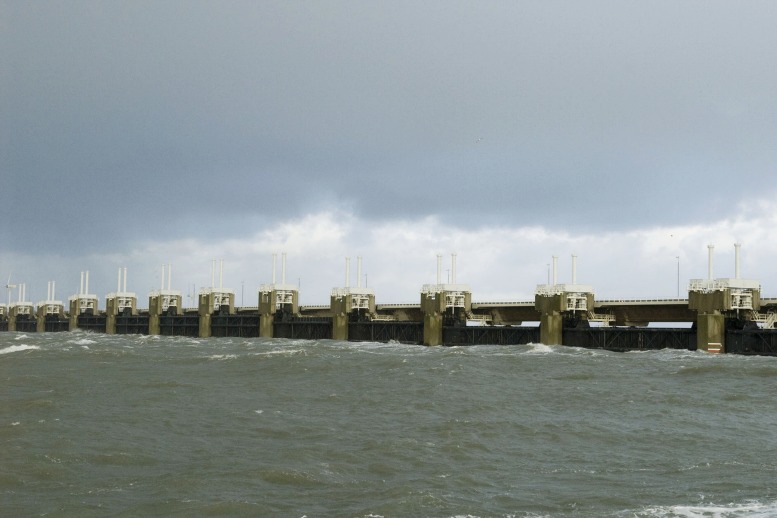
The wall is said to only close when the water is expected to rise around 10-feet beyond average seal levels. After nearly 40 years of construction, the Delta Works was completed in 1997. But, how much does a project like this cost to create? Several sources estimated the price tag to be about $13B in 2012.
Archipelago Lofoten
Located about 1,500 miles away from The North Pole sits Norway's Archipelago, Lofoten. Like a scene straight out of a movie, this landscape is full of calm water, lush greenery, homes, and untouched lands. The kicker? The residents of this area reside within the Arctic Circle!
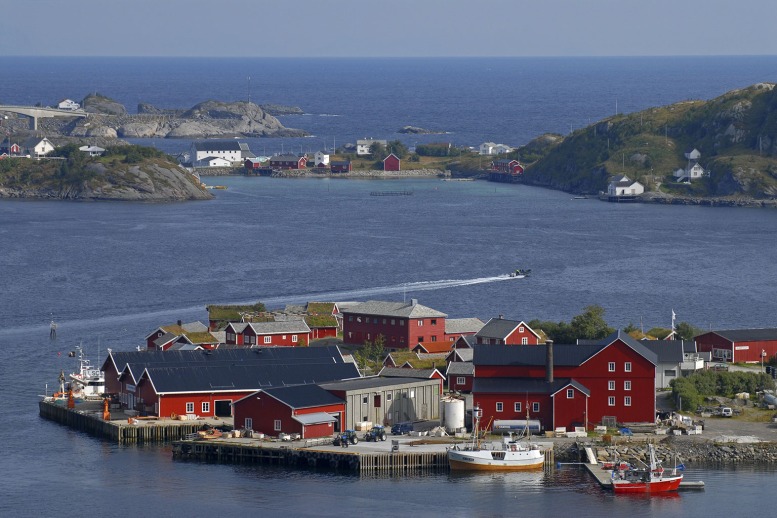 Jorg Dauerer/imageBROKER/Shutterstock via Shutterstock
Jorg Dauerer/imageBROKER/Shutterstock via ShutterstockThis geographic location means that residents of the area experience some of the most drastically elevated temperature irregularities. As hard as it may be to believe people dwell there, Biogeochemist D'Anjou explained, "There is evidence of human settlement extending back at least 11,000 years."
The Millau Viaduct
Above the clouds in France is The Millau Viaduct, or Viaduc de Millau, a massive cable-stayed bridge spanning across the Tarn River's Gorge Valley. In 2020, the four-lane overpass was named the tallest bridge in the world, with a height of 1,104-feet.
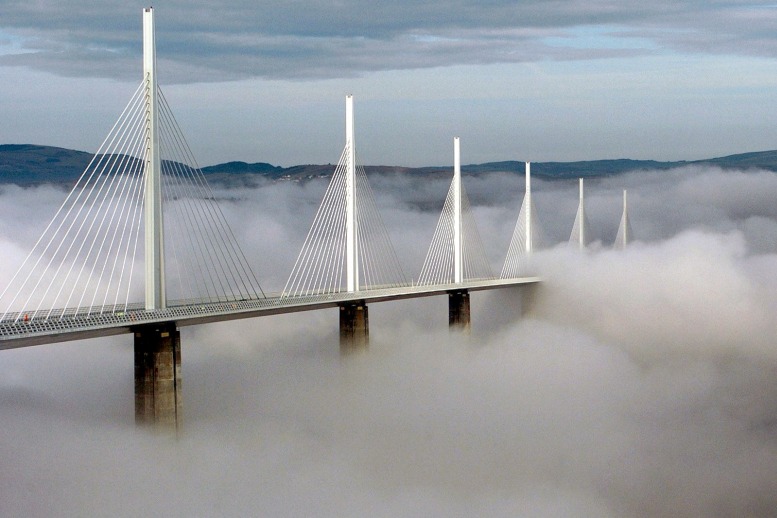 Christophe Ena/AP/Shutterstock via Shutterstock
Christophe Ena/AP/Shutterstock via ShutterstockWith an approximate price tag of $424M, the Millau Viaduct gained another award-winning title. In 2006, the larger-than-life construction received the Outstanding Structure Award from the International Association for Bridge and Structural Engineering.
Tuned Mass Damper
This Tuned Mass Damper has also been referred to as a Harmonic Absorber throughout history. Since its creation, the silencer has been installed in many large spaces, such as the Taipei 101 Skyscraper. In buildings such as this, the damper is used to reduce the effects of mechanical vibrations in the area.
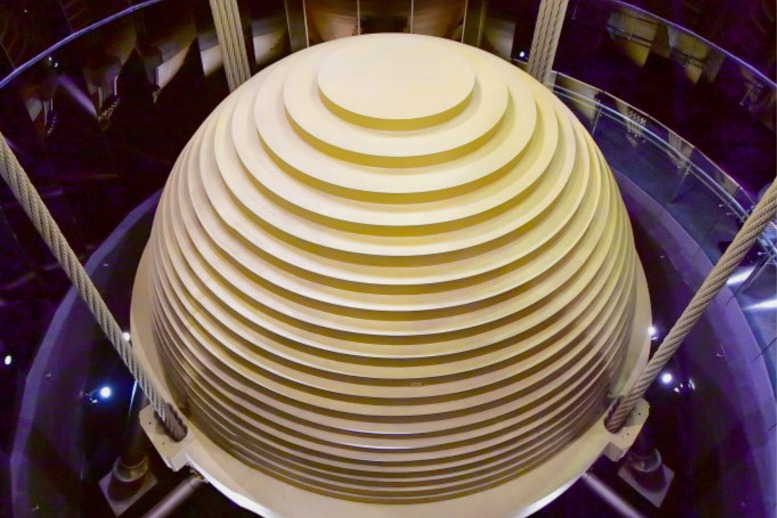 Yuri Smityuk / Contributor via Getty Images
Yuri Smityuk / Contributor via Getty ImagesThe installation of these innovative spring-filled infrastructures can prevent distress, damage, or large-scale structural malfunction within buildings. Although this tool is used inside a skyscraper, other kinds of mass dampers can also be found in power transmission plants and large vehicles.
Normandy Bridge
Located in France is Normandy Bridge, or, in its mother tongue, Pont de Normandie. It crosses over the Seine River and spans a whopping 7,032-feet in length. The bridge overlooks the last bit of the river before it empties into the ocean. And, alongside the steep-hilled overpass is a footpath.
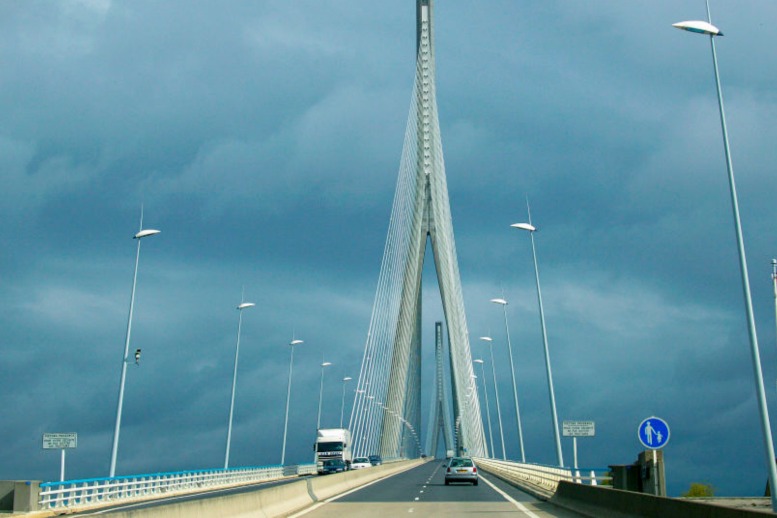 Andia / Contributor via Getty Images
Andia / Contributor via Getty ImagesWhile a blue sign in the bottom right corner clearly shows that a pedestrian walkway exists, we can only imagine the calf workout that comes with making this journey via foot. Nevertheless, architect Michel Virlogeux managed to make this bridge look massively captivating.
The Sart Canal Bridge
Belgium's Sart Canal Bridge began its fully-functioning operations after being under construction from 1998 to 2002. Sitting at 1,634-feet in length, according to the bridge's official operations website, the canal was built to be able to hold 80,000 tonnes of water.
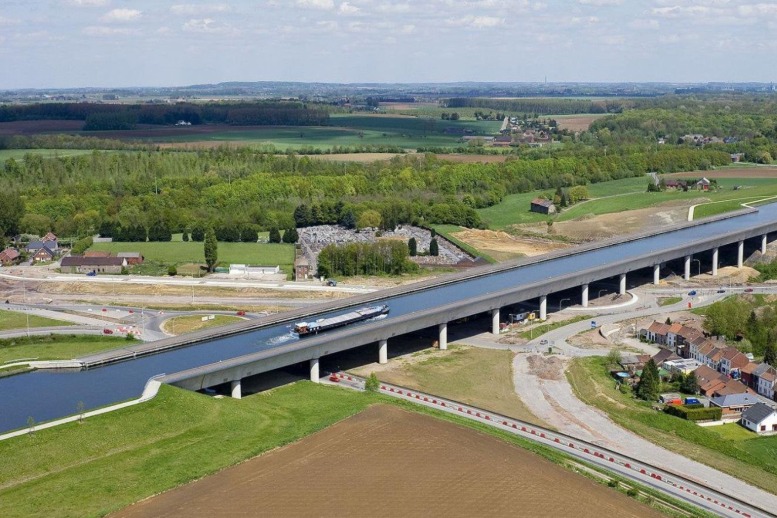 Imgur via u/BunyipPouch
Imgur via u/BunyipPouchWith a massive price tag of $293,202,960, the Sart Canal Bridge, known in the world of architecture as a Side Girder Bridge, was built from materials including reinforced and prestressed concrete. How about that for an incredible and pleasing to the eye creation?
Subsea Underground Roundabout
Located in the Faroe Islands, is a unique structure that we are calling a Subsea Undergroundabout. This is no ordinary roundabout, as it is situated beneath sea level and happens to be full of several unusual sculptures. In fact, it even won an award in 2017.
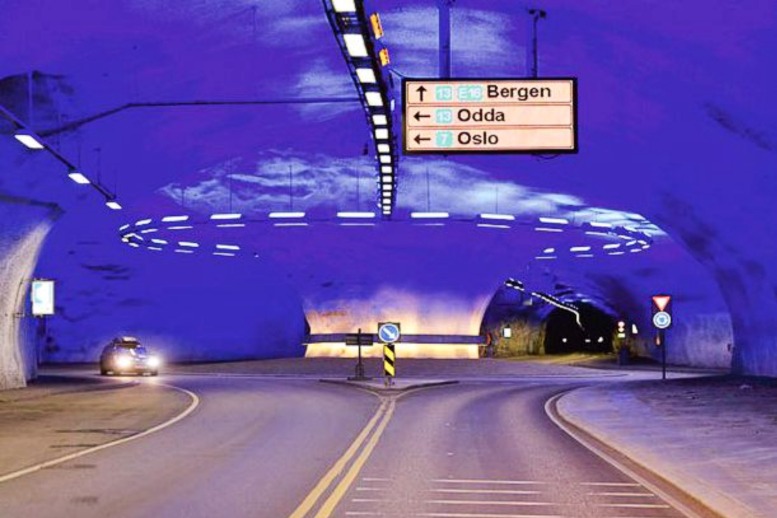 Geoff Robinson Photography/Shutterstock via Shutterstock
Geoff Robinson Photography/Shutterstock via ShutterstockThe Auckland creation won the International Roundabout of the Year award for its unique structure and additions of special touches. If you were to ride through the underground space, you'd notice artwork on the walls that have been said to resemble regeneration of life.
Advertisements
Holland's Heated Streets
First, did you know that there's a town in Michigan called Holland? And second, were you aware that the area has the capability to melt an inch of snowfall in an hour in weather as cold as 20 degrees Fareinheight? Well, if the answer is no to either of these inquires, we'll explain…
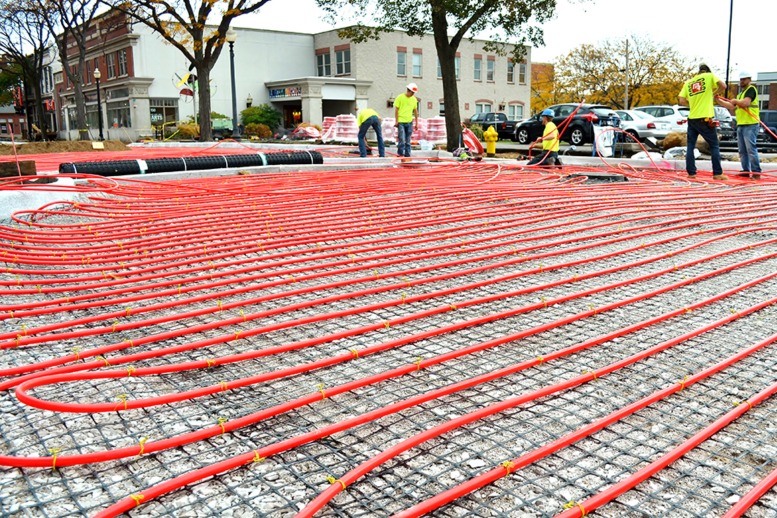 Twitter via @joanmacp
Twitter via @joanmacpThe streets of Holland, Michigan, were constructed to include heated streets and sidewalks that can melt snow and ice. In fact, the intricate system uses wastewater from the nearby powerplant. It then flows through about 120 miles of plastic piping (photographed above) underneath the pavement to heat the surface.
Ecological Highway Bridge
Located between Alacati and Zaytinler, Turkey is an ecological bridge spanning the Izmir-Cesme Highway. This is another example of a way for wildlife to safely travel from one side to the other without risking their lives upon the open road. This creation may seem like a small feat; however, it's anything but.
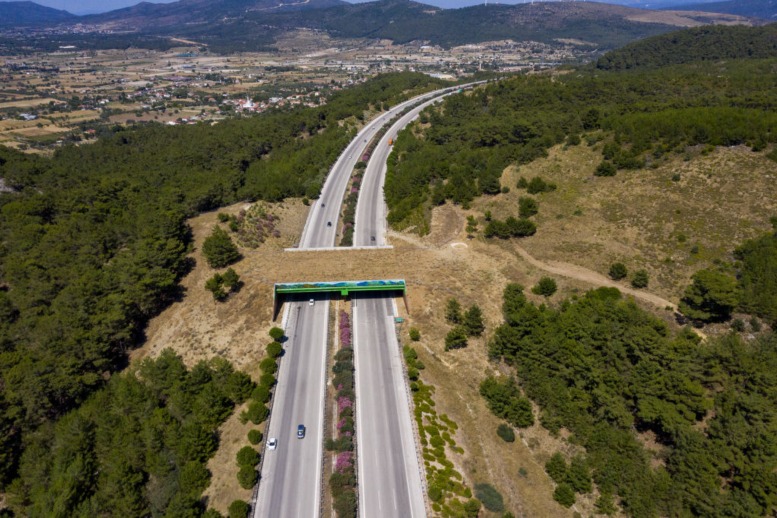 Anadolu Agency / Contributor via Getty Images
Anadolu Agency / Contributor via Getty ImagesSince the bridge was added to this large highway, it has kept both humans and animals much safer than before. In addition, it acts as an eco-friendly way to provide numerous options for travel in this nature-enriched area of the world. Is that a walking path we see on the right side?
Cactus Cell Phone Tower
In many places throughout the world, including Tucson, Arizona, cell phone towers exist in the desert. However, instead of having a giant metal tower in the middle of open land, companies have developed a desert-fitting alternative. And, it includes 20-foot tall fake cacti.
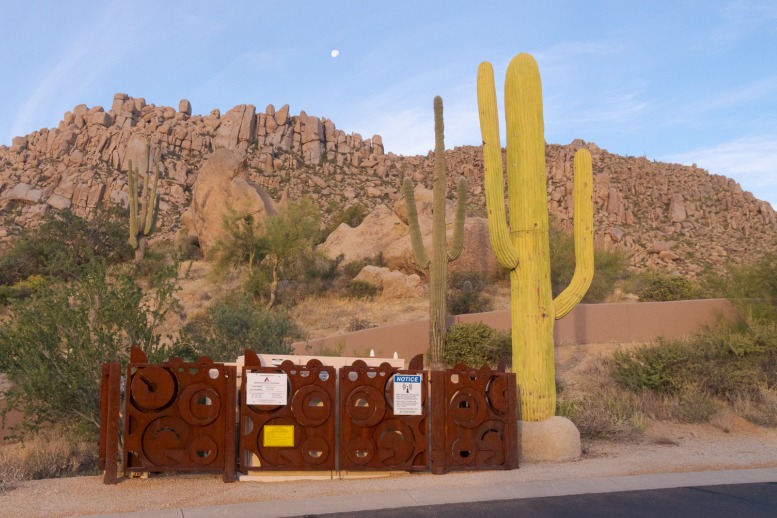 Imgur via Rick Cameron
Imgur via Rick CameronThat's right; in Arizona, cell phone towers are disguised within giant cactus throughout the desert. And, over in Florida, the same idea has played out with palm trees overlooking the roofs of homes in the area. How about that for creative design? If you'll excuse us, we have a long list of mindboggling infrastructure to visit.
Confederation Bridge
The decision to build the eight-mile bridge to connect Canada's eastern province of New Brunswick to Prince Edward Island was not a simple one. Prior to its build, people got from one point to another via a year-round ferry service, but come the 1980s, the proposition gained support.
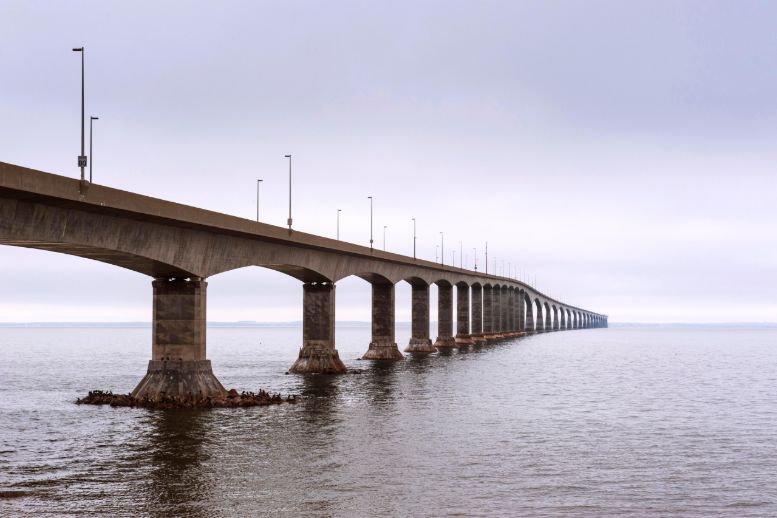 Michael Runkel/imageBROKER/Shutterstock
Michael Runkel/imageBROKER/ShutterstockIn the end, the sprawling bridge was built thanks to more than 5,000 laborers and opened to the public on May 31, 1997. It remains to this day one of Canada's most impressive infrastructural builds and signifies the unification of the country from coast to coast.
Habitat 67
The next item on our list takes us further west into Montréal, Canada. The unique building known as Habitat 67 was one of Canada's most prestigious builds of the 20th century and put one budding architect on the map following his time at McGill University.
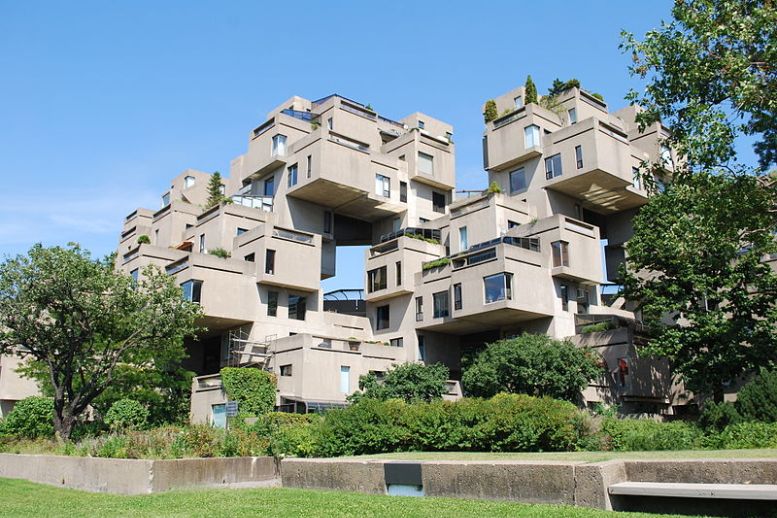 Wikimedia Commons via Concierge.2C
Wikimedia Commons via Concierge.2CMosha Safdie conceptualized the designs for his master's thesis at the Montréal University and later got national approval to move forward with the build in honor of the World's Fair in Montréal in 1967. According to The New York Times, the whole housing project sold for $7 million back in 1986.
Lucky Knot Bridge
The Lucky Knot Bridge, also known as the Knot Bridge or Knot Footbridge can be found in the Dragon King Harbor River area of Meiki Lake District, Changsha, China. And when the international architecture firm NEXT architects designed the plans, they had something very specific in mind.
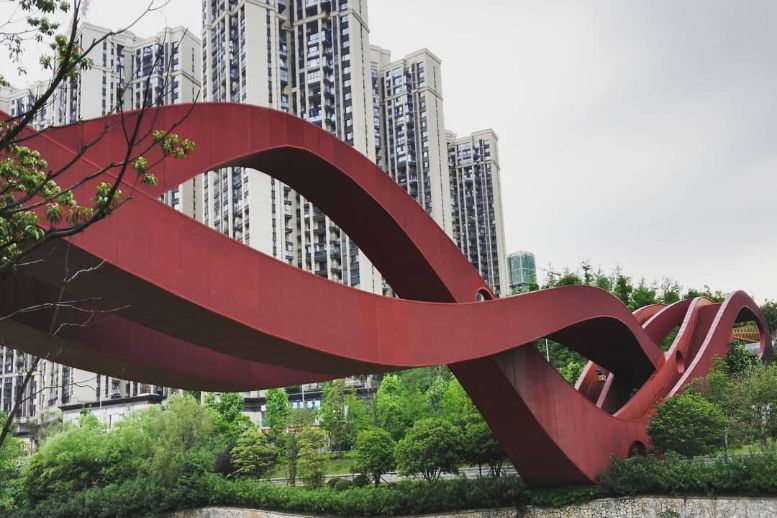 Instagram via simon_shikongo
Instagram via simon_shikongoAccording to the firm, the bridge was built in 2016 with tourists as a priority. The pedestrian-only bridge allows for an architectural experience all while connecting city folks from one side of the water to another. And interestingly enough, the design was based on traditional Chinese knotting.
Laguna Garzón Bridge
The Laguna Garzón Bridge can be found in the Southern end of Uruguay in the village of Garzón. The coastal lagoon pictured below made vehicle travel difficult for the locals, and so the famous Uruguayan architect Rafael Viñoly stepped in with a unique proposition.
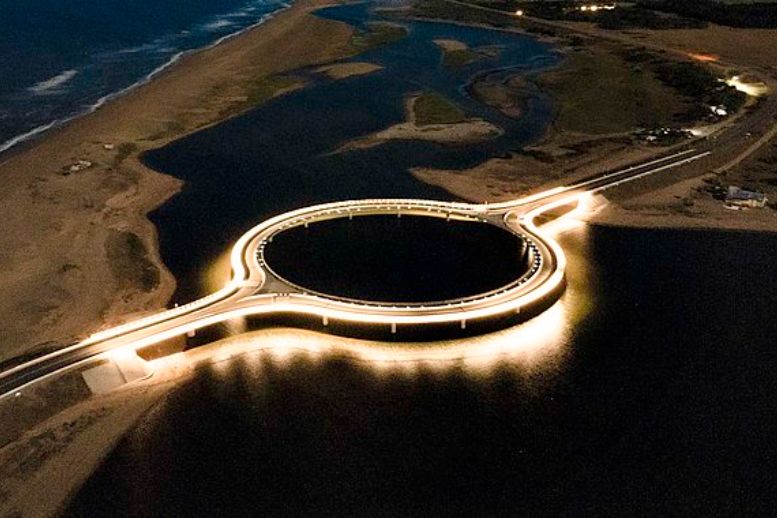 Wikimedia Commons via Jimmy Baikovicius
Wikimedia Commons via Jimmy BaikoviciusHe designed this bridge with multiple visions in mind. First, it created a piece of architectural beauty to grace the area. In addition, it allowed for constant access whereas previously commuters were relying on good weather for ferry operation. And lastly, the bridge was designed to facilitate safe pedestrian crossing as well.
Niterói Contemporary Art Museum
Based on the unique and challenging scale of this build, you could guess that the Niterói Contemporary Art Museum in Rio de Janeiro, Brazil was a labor-intensive project. According to Architect Magazine, the build took 300 workers and over 1,000,000 tons of concrete over five years.
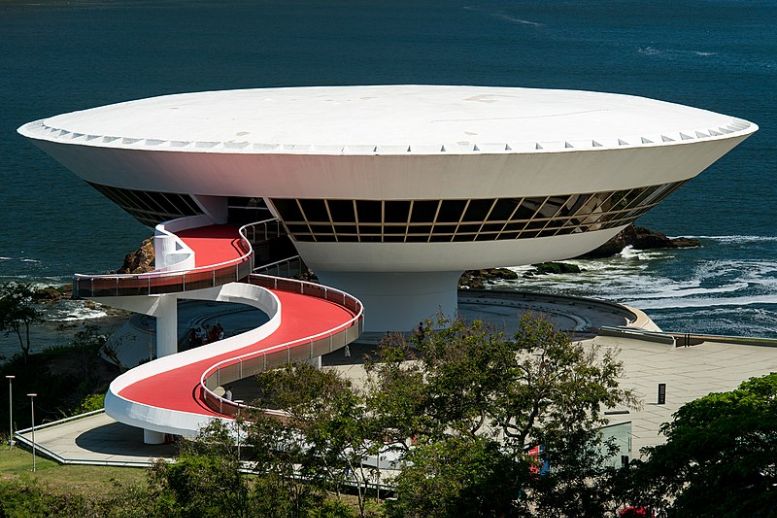 Wikimedia Commons via Donatas Dabravolskas
Wikimedia Commons via Donatas DabravolskasAnd in the end, they ended up with this magnificent piece of architecture, which has drawn in tourists from all over the world. And from what visitors say, no picture can do the building justice. But for now, we'll just have to take their word for it.
Inguri Dam
According to Britannica, the Inguri Dam in Western Georgia is the tallest arched dam in the entire world. It was built in the 1980s to control the water flow from the Caucasus Mountains to the Black Sea. And besides being breath-taking in size and beauty, it also serves the surrounding community.
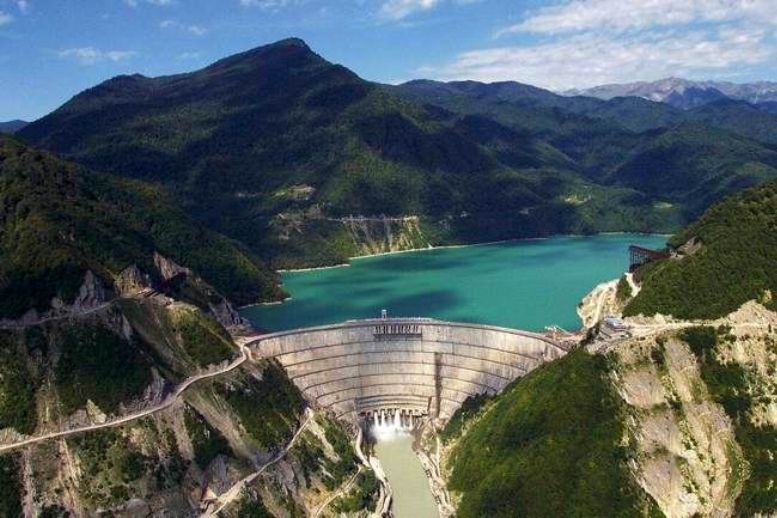 Wikimedia Commons via The Regional Administration of Mingrelia-Upper Svaneti, Georgia
Wikimedia Commons via The Regional Administration of Mingrelia-Upper Svaneti, GeorgiaThe nearly 900 foot-tall dam connects to a five-unit power plan that can generate 1,300 megawatts of power at full capacity. And it helps push the country forward by powering a reported 40% of the nation's energy. Keep scrolling for more incredible pieces of infrastructure from around the world.
Lego-Brücke
The Lego-Brücke, or, in English, Lego Bridge is a city bridge found in the Northwestern city of Wuppertal, Germany. And though convincing it may look, this unique piece of infrastructure truly does play with the minds of those who come across it. Let's see why...
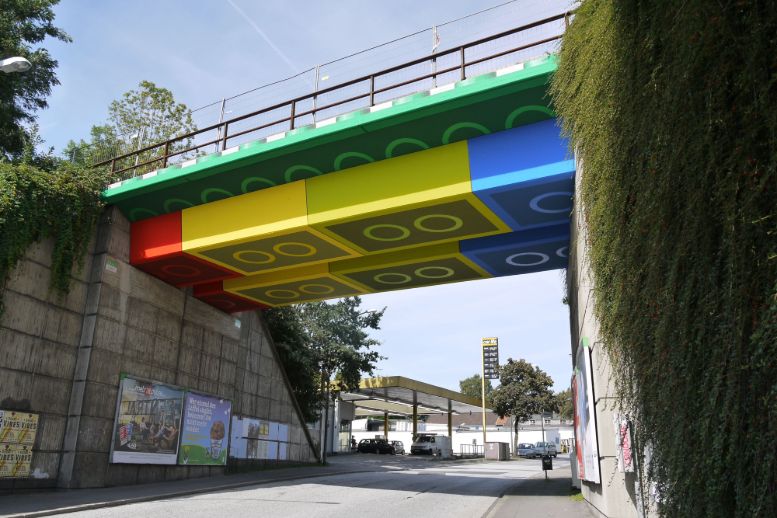 Rolf Dellenbusch/Shutterstock
Rolf Dellenbusch/ShutterstockWell, the aesthetic side of the project was completed back in 2011 by Martin Heuwold. But the bridge itself is an average piece of city infrastructure. Martin repainted the bridge to emulate his daughter's favorite toy of the time. And it landed him the Deutscher Fassadenpreis Advancement Prize in 2012.
Twin Sails Bridge
The Twin Sails Bridge, located in Southern England, is a unique piece of city infrastructure that connects the city of Poole to Hamworthy. The bridge was designed to allow for ships passing by and clearly took inspiration from its aquatic traversers…
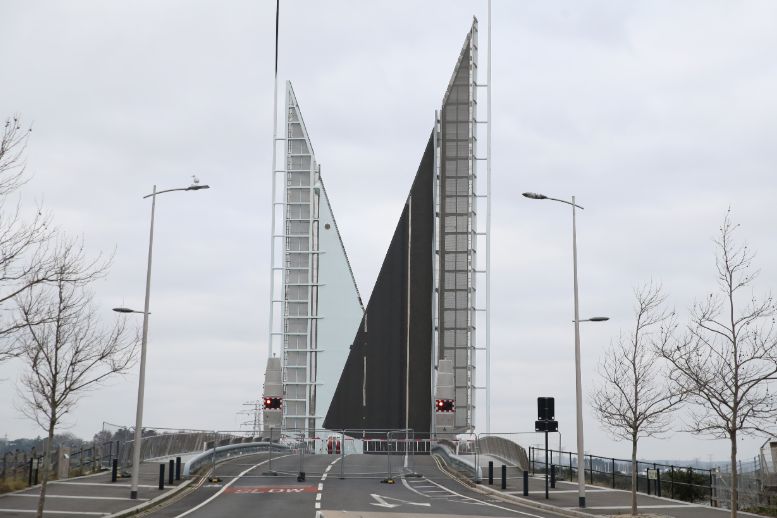 Andrew Matthews - PA Images / Contributor via Getty Images
Andrew Matthews - PA Images / Contributor via Getty ImagesWhen lifted upright, the two pieces of the bridge have a sail-like appearance. The architectural design implemented gained the city and the bridges worldwide recognition, but also came with a hefty price tag. According to multiple sources, the bill came in at roughly $25.5 million.
Guggenheim Museum
The Guggenheim Museum in Bilboa, Spain was conceptualized by the famous Canadian-American architect Frank Gehry and is widely accepted as one of the most magnificent feats of 20th-century design around the world. And though extraordinary as its exterior may be, it still serves its primary function.
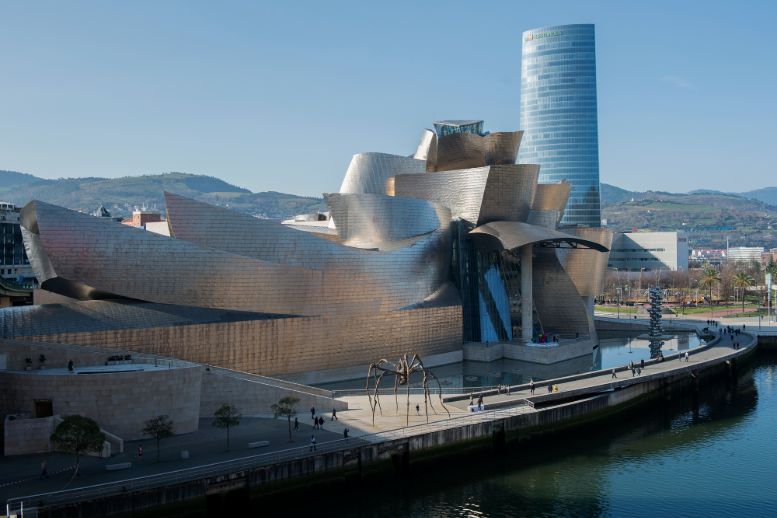 ANDER GILLENEA / Contributor via Getty Images
ANDER GILLENEA / Contributor via Getty ImagesThe building stands at over 250,000 square feet of space, with a good portion dedicated to the curved high ceilings that can be seen in the photograph. But that still leaves the collections nearly 97,000 square feet to work with. And the build didn't come cheap. Estimations have floated in the realm of $89 million.
Lotus Temple
The Lotus Temple in New Delhi has followed in a long line of miraculous buildings that have taken inspiration from the great outdoors. And in this specific case, the architect Fariborz Sahba was particularly influenced by lotus flowers all while meeting the requirements of a Bahá’í House of Worship.
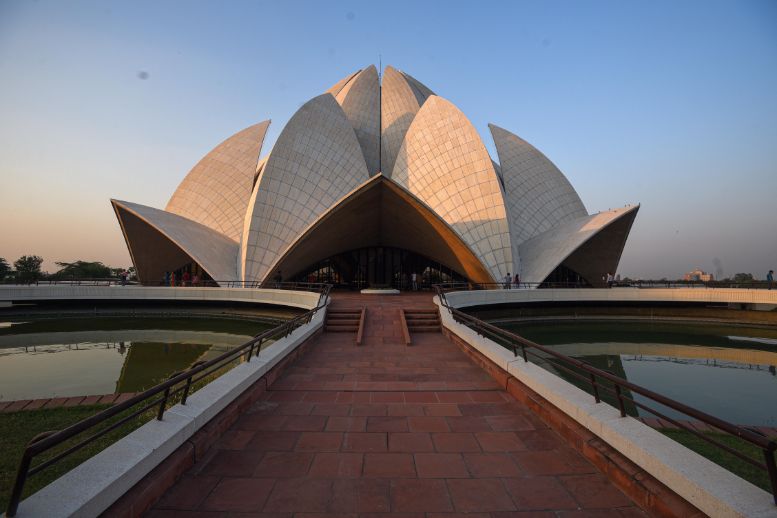 Hindustan Times / Contributor via Getty Images
Hindustan Times / Contributor via Getty ImagesThat involves the building having a total of nine sides and a circular build. But beyond that, Sahba constructed 27 petals made out of Grecian white marble to grace the building's exterior. And the motif of aquatic flowers continued on the grounds. Nine ponds can be found on the property in addition to a large garden.
Beijing National Stadium
The nature-inspired motif takes us next to Beijing, to a famous stadium nicknamed the "Bird's Nest." This intricate building was designed for the 2008 Olympics that was held in Beijing, China. While many firms pitched their designs, in the end, Herzog & de Meuron from Switzerland were selected to carry out their vision.
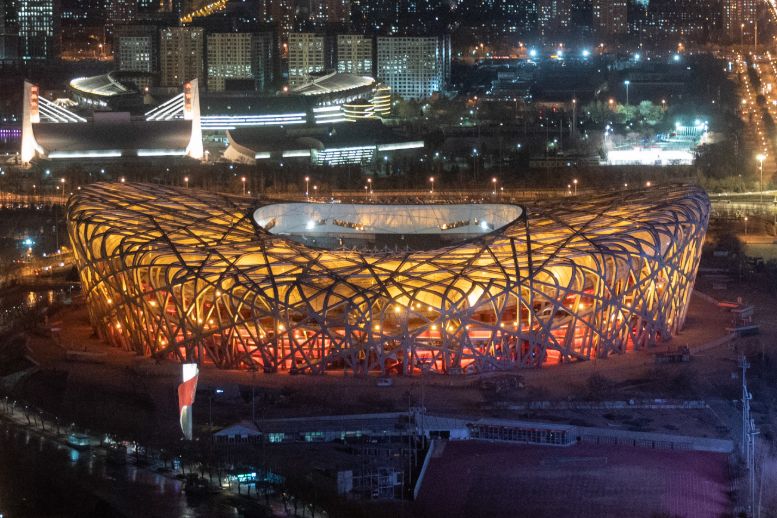 WANG ZHAO / Contributor via Getty Images
WANG ZHAO / Contributor via Getty ImagesOriginally, the "random" strands of steel were favored to hide the stands to support a retractable roof but remained in the plans even when the mechanical roof was scrapped. In the end, the whole project was believed to come in at over $425 million. But luckily, it certainly got its money's worth during the international event.
Museum of Pop Culture
Next up on our list is this prized building in Seattle, Washington. And interestingly enough, it was designed by an architect who has already been featured in the round-up. That's right, the Museum of Pop Culture was the brainchild of none other than Frank Gehry: the same mastermind behind the Guggenheim museum in Spain.
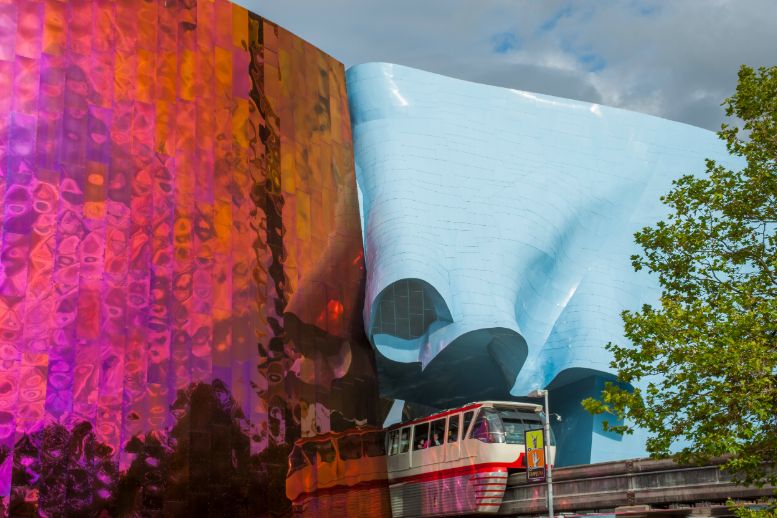 Wolfgang Kaehler / Contributor via Getty Images
Wolfgang Kaehler / Contributor via Getty ImagesGehry created the plans for this immersive cultural center, and the location made history as his first commercial project in the Pacific Northwest. And he certainly made a statement! This unique building stands at a total of 140,000 square feet and has a footprint of 35,000,000 of the Seattle city center.
United States Air Force Academy Cadet Chapel
In such a beautiful State like Colorado, it takes a lot to make a mark amidst all the natural wonders of the outdoors. And yet, the United States Air Force Academy Cadet Chapel has done just that. According to its website, it is the single most popular mand-made attraction in the entire state.
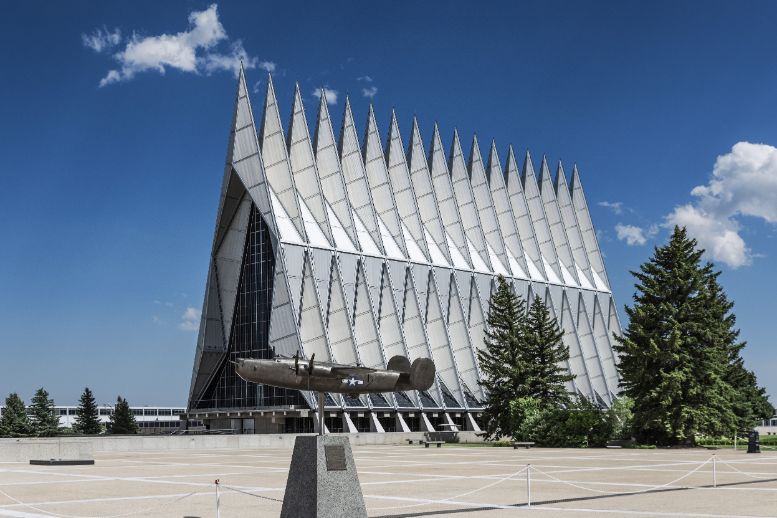 Loop Images / Contributor via Getty Images
Loop Images / Contributor via Getty ImagesBut what also may be drawing in the crowds is its inclusive nature. The chapel was designed to accommodate cadets of all faiths. The eye-catching structure has chapels devoted to the Catholic, Jewish, and Buddhist worshipers. Unfortunately, the building is closed for renovations but is expected to open in 2023.
Marie-Elisabeth-Lüders-Haus
The Marie-Elisabeth-Lüders-Haus can be found in the prestigious national government district in the busy metropolis of Berlin, Germany. And this striking building has been catching the attention of both locals and tourists ever since its completion back in 2003. So what about its features?
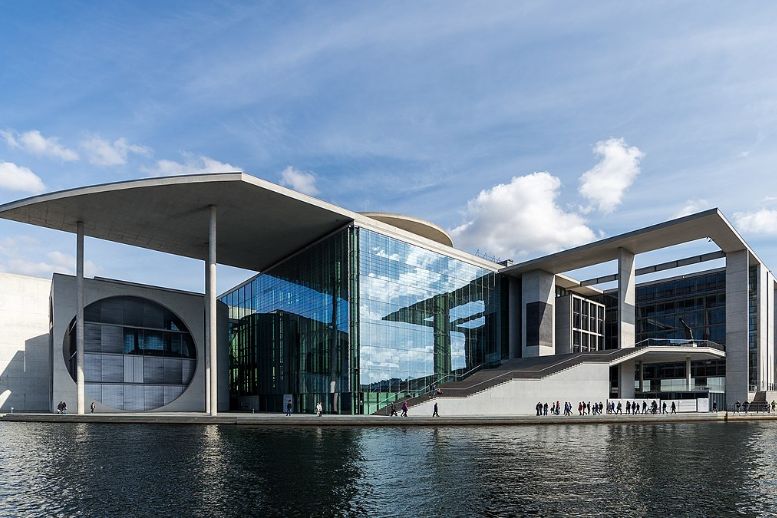 Wikimedia Commons via Ansgar Koreng
Wikimedia Commons via Ansgar KorengWell, the architect Stephan Braunfels produced a structure full of one-of-a-kind features. Most notably, the building's Great Hall was built with two enormous circular openings, one of which can be seen in the photograph. The building's namesake is derived from an influential woman's rights activist from German history.
Magdeburg Water Bridge
This genius bridge can be found in the city of Magdeburg, which is Southwest of the country's capital. The Magdeburg Water Bridge intersects the Elbe River and connects to two canals. And interestingly enough, it currently stands as the longest navigable aqueduct in the world.
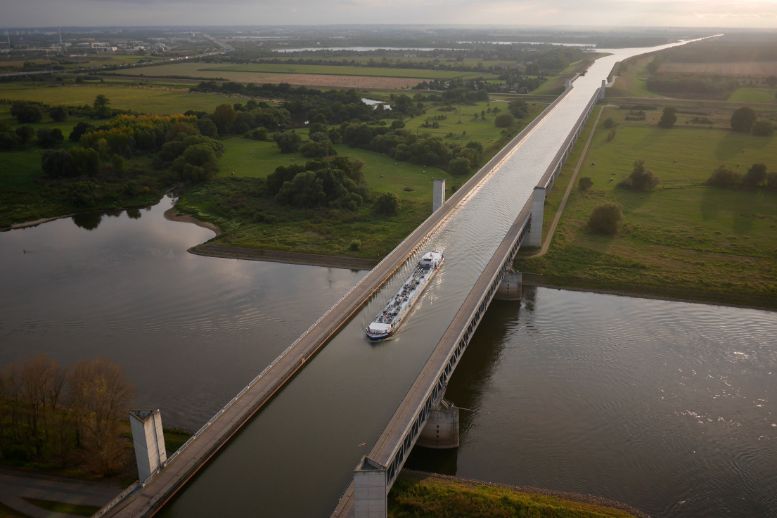 Amos Chapple/Shutterstock
Amos Chapple/ShutterstockAnd that totals at a whopping 3,000-plus foot long! The passage allows for boats to move freely down the canal, and solved the problem that had previously forced ships to take a 7.4-mile detour and boat life to reach the river. Luckily the project finished in 2003 and has been making waves since.
Philharmonie of Paris
It is said that the musical heart of Paris lies in the Philharmonie. The enormous silver structure holds some of the country's most glorious music halls and rehearsal studious, in addition to exhibition space. And compared to this century-old city, the building is incredibly new.
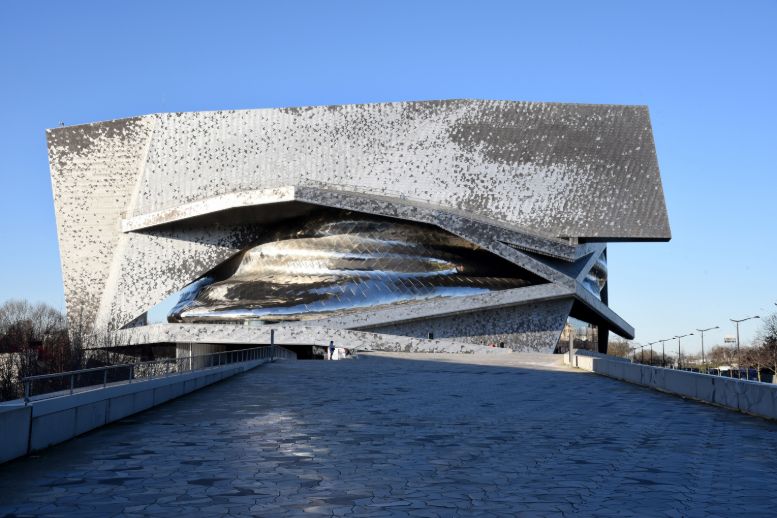 Andia / Contributor via Getty Images
Andia / Contributor via Getty ImagesThe project was announced back in 2006 and was wrapped up nine years later at the opening ceremony on January 14th, 2015. The head architect, Jean Nouvel incorporated numerous unique details into the build, including hundreds of thousands of birds printed on the building's exterior.
The Queen Elizabeth II Great Court
In a century-old city like London, the city's real estate has almost entirely been taken up with unique heritage buildings such as the British Museum. However, for architects up for a challenge, it can provide a one-in-a-career opportunity to incorporate the old with the new and create something magnificent.
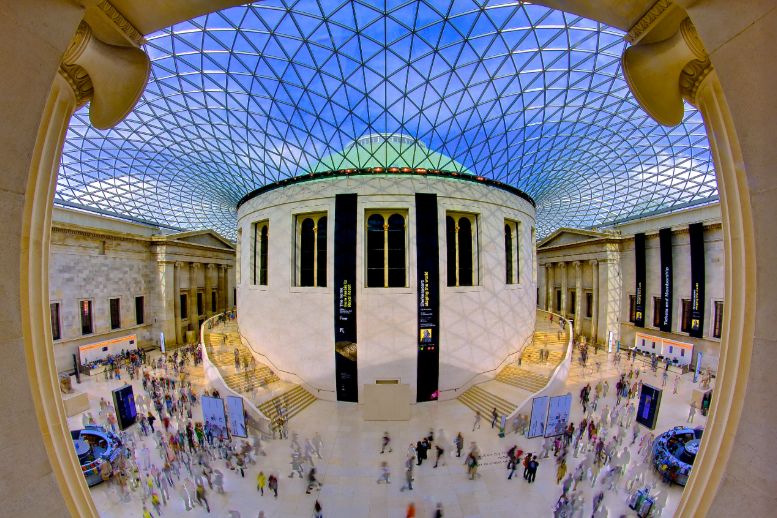 Andrea Pucci / Contributor via Getty Images
Andrea Pucci / Contributor via Getty ImagesAnd the minds at Foster and Partners truly did just that. The firm reimagined the enormous space and encased it with a curved glass ceiling, with the famous Reading Room located in the center. The redesigned Great Court opened to the public in 2000 and has since been visited by over 113 million visitors!
Walt Disney Concert Hall
Frank Gehry has popped up not once, not twice, but now three times on our roundup of amazing infrastructure. His creative mind birthed the unique concept that came to be known as the Walt Disney Concert Hall, also known as the home of the Los Angeles Philharmonic.
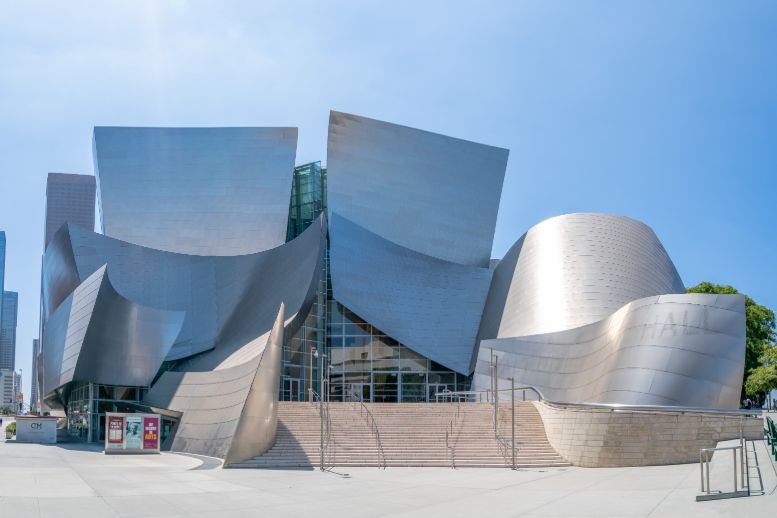 AaronP/Bauer-Griffin / Contributor via Getty Images
AaronP/Bauer-Griffin / Contributor via Getty ImagesThe building followed Gehry's revolutionary approach to design, and incorporated such lightness into the building, that it looks as if it could almost blow away in the wind! That is, of course, if it wasn't built out of roughly $130 million worth of materials...
Chemosphere
For Los Angeles architecture enthusiasts, this next entry may not come as much of a surprise. The Chemosphere has made such an impression on the Californian city that it earned recognition as a Historic-Cultural Monument back in 2004. In addition, it landed on the Los Angeles Times list of top 10 houses in the city in 2008.
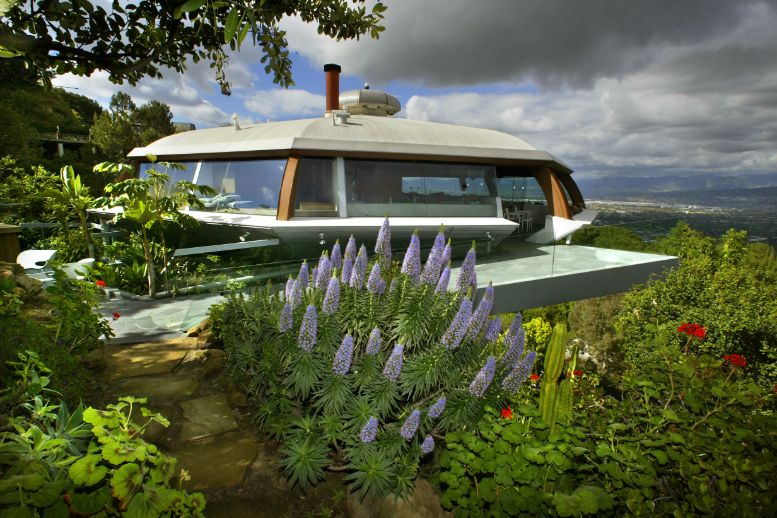 Ken Hively / Contributor via Getty Images
Ken Hively / Contributor via Getty ImagesThe flying saucer-like building was built partially as an experiment back in the 1960s under the designs of John Lautner. After he and his family sold the property back in the 1970s, the modern LA building went through decades of turmoil and disarray before being bought by a German publishing mogul named Benedikt Taschen.
Soumaya Museum
Tucked in the northwestern Mexico City area of Nuevo Polanco is the Soumaya Museum. This curved building was designed by Fernando Romero and opened to the public a decade ago. And while most galleries pride themselves on its interior, the exterior of the Soumaya is a work of art itself and is covered by 16,000 hexagonal tiles.
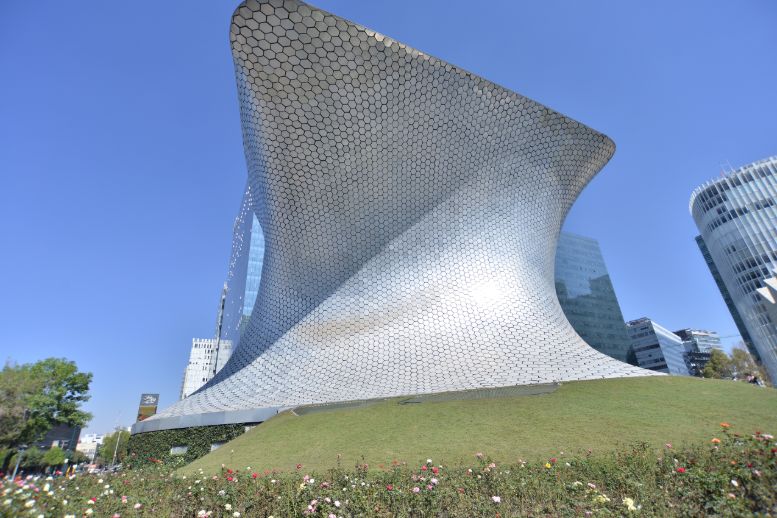 NurPhoto / Contributor via Getty Images
NurPhoto / Contributor via Getty ImagesReportedly, over one million visitors walk through the museum doors each year, ranking it as the most popular museum in all of Mexico. The collection boasts a reported 66,000 works spanning 30 centuries. And estimations of the total costs to build this eye-catching building float in the neighborhood of $70 million USD!
Lakhta Tower
According to the Lakhta Center's web page, the city in which the building was built, St. Petersburg, was "created as a city of horizontals." And as you can see in the picture below, that makes the Lakhta Tower stand out just that much more. It has been dominating the skylines since its completion in 2018.
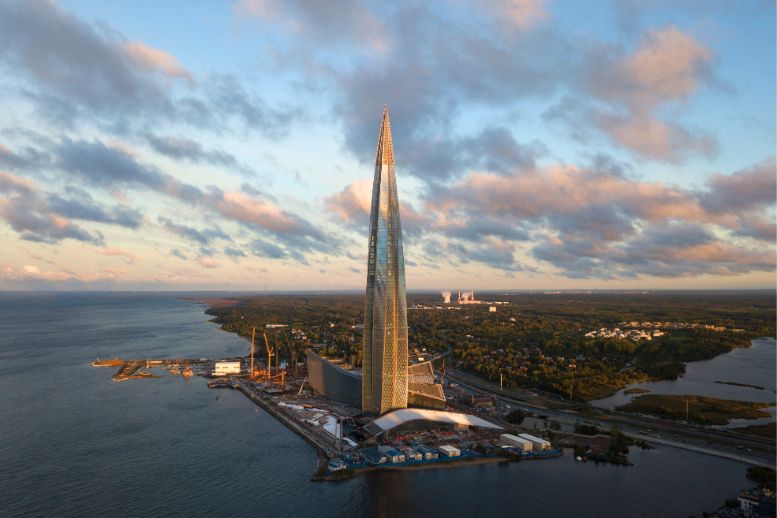 Anton Vaganov / Contributor via Getty Images
Anton Vaganov / Contributor via Getty ImagesIn fact, it's been the tallest building in Russia since its completion. But the Lakhta has made history since the start, as its concrete base was the longest pouring of a slab according to the Guinness World Records. Keep scrolling for more impressive feats of architectural might...
Bahá'í Temple
Just like the Lotus Temple in New Dehli, this Chilean temple is devoted to the Bahá'í faith. Its official name is the Templo Bahá'í de Sudamérica and can be found in the eastern outskirts of Santiago, Chile. This award-winning building was completed in October of 2016.
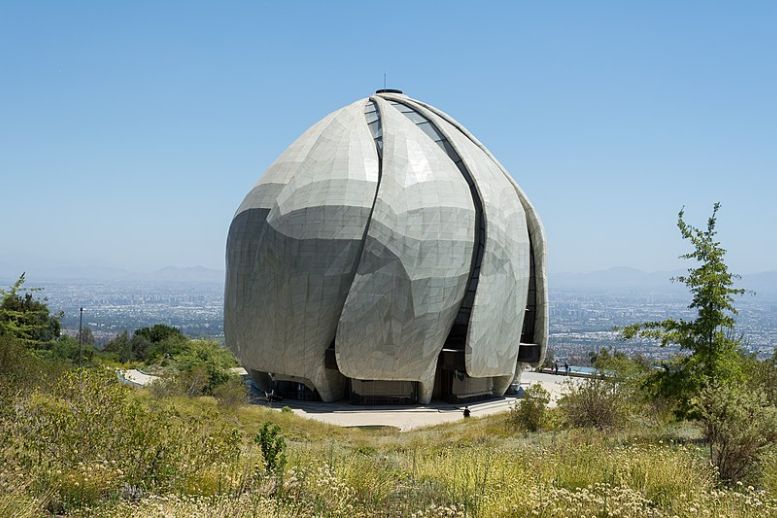 Wikimedia Commons via Carlos Figueroa
Wikimedia Commons via Carlos FigueroaThe architect, Siamak Hariri, set out to create something special while still abiding by the rules of a Bahá'í temple. Just like the Lotus Temple, the Templo Bahá'í de Sudamérica features nine walls, in this case emulating sails of a ship and also petals on a flower. At full capacity, 600 people can fit in the spacious pod.
The Congress Hall
The Congress Hall or as many people in Germany know it as, the Haus der Kulturen der Welt, is one of Berlin's most historically relevant modern buildings from the 20th century. Blueprint work on this disk-like structure began in 1955 when an American-born architect named Hugh Stubbins started designing it during the Cold War.
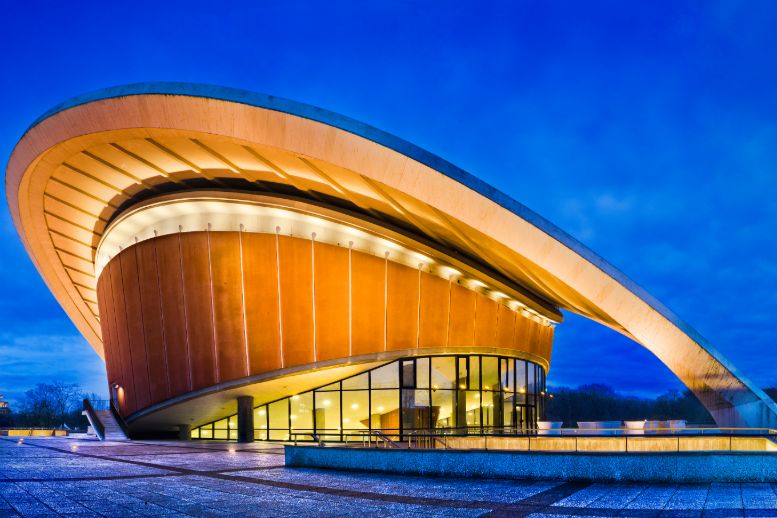 Domingo Leiva Nicolas / Contributor via Getty Images
Domingo Leiva Nicolas / Contributor via Getty ImagesThe structure was meant to boast the West's innovative approach to design during the INTERBAU building exhibition in Berlin in 1957. From the rear view of the building, the roof emulates the wings of a bird in flight, which was meant to symbolize the freedom of the West.
Bosjes Chapel
Located on the Bosjes Wine Farm in Wellington, South Africa, the Bosjes Chapel is one of the most uniquely structured roofs to grace the small winery town. The studio that created the designs, Steyn Studio, aimed to create a building roof that matched the natural beauty of the mountains looming in the town's distance.
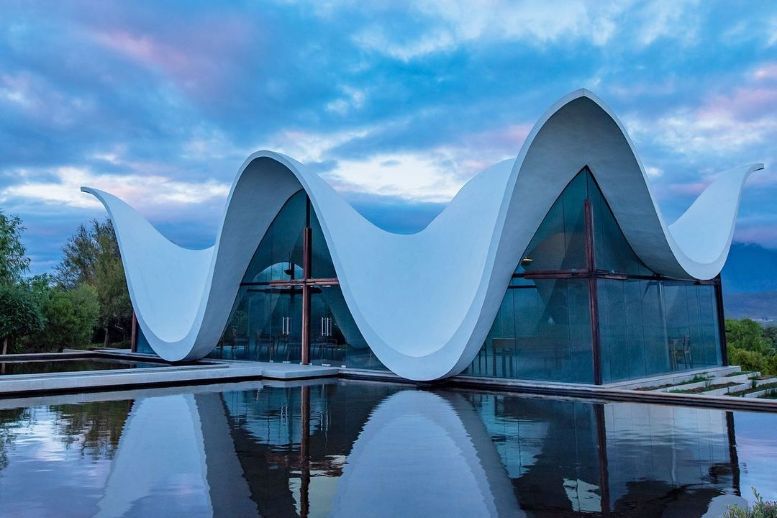 Instagram via @bosjes_farm
Instagram via @bosjes_farmThe Bosjes Chapel serves as the winery's spiritual center and has gained praise amongst numerous bodies for its intricate and effortless form. On its website, a list of accolades can be found, including Cape Institute's for Architecture Award and Archilovers Best Project.
Alamillo Bridge
This harp-like bridge can be found in Seville, Spain, and crosses the Canal de Alfonso XIII. It connects to La Cartuja, a stretch of land sandwiched between the canal and a river named Guadalquivir. The unique piece of infrastructure was built for Expo 92, which was held on nearby farms.
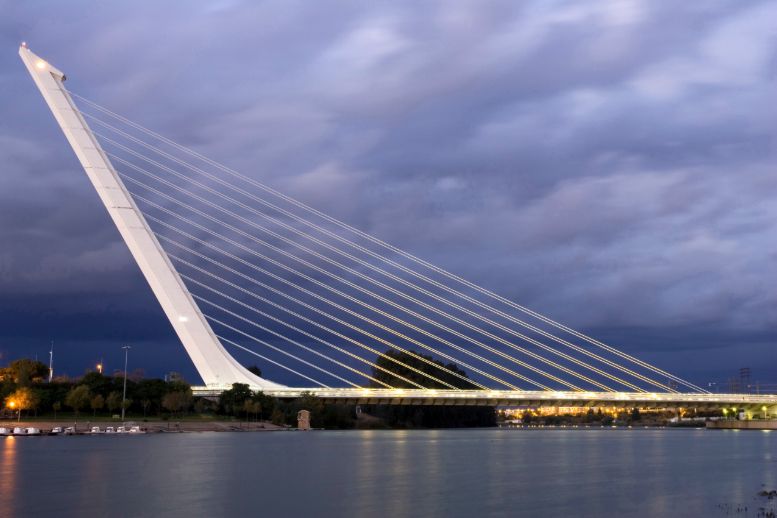
Sponsored Links
The bridge's designer, Santiago Calatrava, started to see his vision come to life when construction started in 1989, but reportedly, the bridge was based on one of his earlier sculptures titled the Running Torso. The 650-plus foot-long stretch was widely praised for its innovative build.

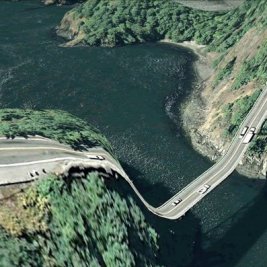

Comments